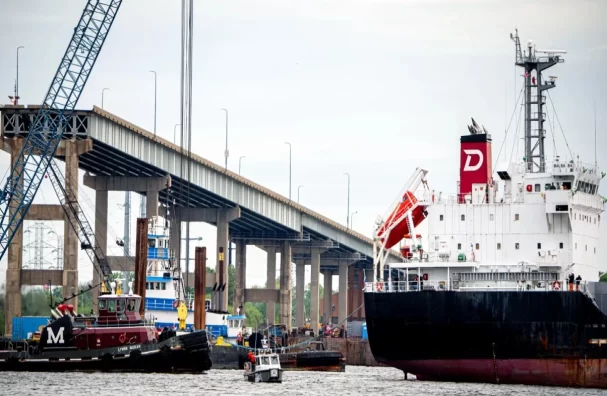
In a significant development following the tragic collapse of the Francis Scott Key Bridge, the Port of Baltimore has seen the departure of the first large vessels. They made their way out via a newly opened, deeper temporary channel. This marks a vital step towards the recovery of the port and the resumption of commerce.
Four out of the 11 vessels that were trapped behind the wreckages for over a month finally left the port on Thursday. They made use of an alternate shipping channel that was opened earlier in the day. The vessels included the Balsa 94, a cargo ship, and Saimaagracht, a general cargo ship sailing under the Netherlands flag.
The Wallenius Wilhelmsen vehicle carrier Carmen, sailing under the Swedish flag and the Phatra Naree, a Thailand-flagged bulk goods carrier, also left the port. The latter made it through the temporary channel two hours later.
This day marked a significant milestone towards port recovery, allowing vessels back into the stream of commerce after weeks in port. According to Richard Scher, a spokesman for the Maryland Port Administration, about half the vessels that currently dock in Baltimore’s port can use the new deep-draft channel. However, the Coast Guard has the final say and considers criteria such as weight and beam limits.
The newly opened channel had a depth of 38 feet, a clearance safety number confirmed by surveys conducted on Thursday morning. However, vessels refer to the 35-foot draft depth. It is the deepest yet of four temporary, alternate routes in and out of the port.
However, the new Fort McHenry Limited Access Channel, for commercially essential vessels, will stay open only through 6 a.m. Monday, or through Tuesday, if weather conditions adversely affect transit. After shutting down next week, the 38-foot channel will not reopen until around May 10.
The Army Corps of Engineers expects to reopen the Port of Baltimore’s permanent 700-foot wide, 50-foot deep channel by the end of May. This reopening will allow vessels that have remained within the Port of Baltimore since the March 26 incident to leave.
Inbound vessels are expected to include a small bulk carrier and a ship carrying aluminum. The port has been blocked to most vessel traffic since the Dali appeared to lose power and struck a bridge support column, causing the 1.6-mile bridge to collapse and killing six construction workers.
